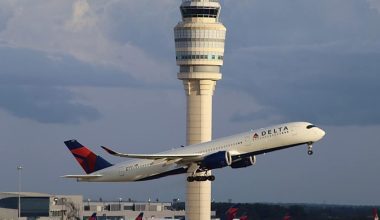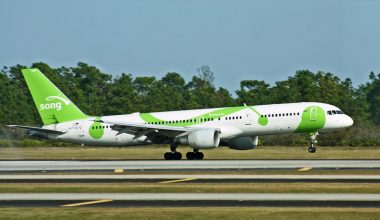Cessna 400 is an iconic single-engine airplane known for its exceptional performance, which came into production in 2004. Cessna 400 ruled the aviation market as being the fastest fixed-gear single-engine piston aircraft equipped with the integrated Garmin G 1000 avionics system and GFC700 autopilot. The aircraft is lighter with a fixed gear. The speed maximization would be minuscule with retract to squeeze every ounce of power available.
Cessna 400, marketed as Cessna TTx, is powered by a turbocharged continental TSIO-550-C engine with a low-wing and fixed gear. The aircraft is used for general aviation operations, excluding commercial air transport. It performed the role of civil personal transportation aircraft, produced from 2004-2018.
Cessna 400 is an amalgam of ergonomics and technology that assures a comfortable yet powerful flight experience. It has a strong and light all-composite wing, and the overall body has superior stability, durability, and strength. It is known for low interior noise, roomy cabin, easy handling characteristics, avionics suite, etc.

Cessna 400 is an excellent choice for people who have a ‘need for speed’ and a penchant for ‘craftsmanship’ that lets their dreams take flight. Cessna Aircraft is painstakingly crafted over time to become a maker of premier personal aircraft on the aviation market. The elegant Cessna 400 garners a high level of standard features that one can expect in a luxury personal aircraft. Host of subtle ‘value added’ features with innovative options drives the pursuit of perfection for the Cessna 400 owners.
Cessna 400 is not pressurized and can carry a maximum payload of 700 pounds. It can take off with a maximum weight of 3600 pounds and land with 3420 pounds. The aircraft could operate flight within the normal flight envelope by incorporating Garmin’s Electronic Stability Protection System (SFS).
Development history
Cessna 400 was developed from single-engine, normally aspirated Cessna 350 Corvalis or Columbia 300. The power plant for Cessna 400, 310-hp Continental TSIO-550-C engine could be operated lean of peak to reduce throttling losses.
Cessna 400 was actually built by Columbia Aircraft and was called Columbia 400 before Cessna bought the aircraft and was sold as such.
In 2013, Cessna manufactured the Cessna TTX model T240, which had advanced avionics and interior. It was the upgraded version of the Cessna 400, which is the most recent model.
Cessna’s speediest airplane got icing approval, also known as Flight into Known Icing or FIKI, in 2014, which could provide up to 2.5 hours of anti-ice protection. The TKS sweeping wing system could prevent and remove ice and spraying solutions on prop and windshield.
Cessna 400 was discontinued due to low volume sales three years ago. The production was ended in 2018. It could only sell 23 TTX models in the year 2017. At the same time, its competitor Cirrus SR22 could sell 309 units in 2017.
Features of Cessna 400
- Also labeled as Corvalis TT for twin-turbocharged on 14 January 2009, Cessna 400 features optional speed brakes to increase the drag mounted on the top surfaces of the aircraft’s wings.
- The sporty and well-equipped aircraft was acquired as a foil for rising Cirrus Design. Initially, Columbia 400, renamed as Cessna 400, the aircraft was named ‘Corvalis,’ matching the neighboring town. The low sales rate led to the end of the aircraft production program from the product line.
- Model 400 has no direct steerable nosewheel. Pilots have to use differential braking on mainwheels to achieve directional control while taxiing.
It is capable of conducting up to 25,200 flight hours which is its certified airframe maximum life.
- It has a total seating capacity of 3 passengers and one crew.
- Cessna 400’s improved version TTX is adorned with
- a new glass cockpit panel based on Garmin G200
- dual Attitude and Heading reference systems
- A GFC700 autopilot
- Remote keyless entry with step lights cabin feature
- Garmin GTS 800 traffic avoidance system
- Garmin GTX 33ES Transponder with Automatic Dependent Surveillance-Broadcast (ADS-B)
- L-3 Trilogy as a backup
- A built-in pulse oximeter, new interior
- This modified and improved version doesn’t equip traditional instruments.
Variants of Cessna 400

The three variants of the super sleek Cessna 400 are as follows:
- Columbia 400
The Columbia Aircraft Manufacturing Corporation produced the initial model 400 that combines stunning ramp appeal with state-of-art safety features and speed lying in its title of ‘world’s fastest) certified piston-engine. Columbia 400 has a jaw-dropping performance with a speed that even confounded air traffic controllers at a time.
- Cessna 400 TT Corvalis
Twin supercharged, dual supercooled Cessna 400 TT Corvalis is the initial Cessna-produced model where TT stands for Twin Turbocharged. It has incorporated Garmin 1000 but not ESP, carrying four people at one time.
- Cessna 400 Corvalis TTx
Cessna 400 Corvalis TTx makes power with lower manifold pressure and higher RPM constituting a strong airframe that is capable of enduring severe turbulence. Fitted with Garmin G2000 avionics, it was an improved Cessna model that first flew on 2 March 2013. Cessna 400 Corvalis TTX was the fastest aircraft in its class as it equipped a twin-turbocharged six-cylinder, fuel-injected engine, and a constant-speed propeller. The aircraft owner has the comfort of a built-in oxygen system.
Cessna 400 TTX has awesome comfort and control features using the latest technology, carefully chosen materials, and custom-fitted interior, touch-screen avionics, and throttle control to offer comfortably controlled flight. It has intuitive handling designed to balance control with DirectControl technology. The touch-screen panel of updated Corvalis transmits commands via an infrared grid under the glass.
Reason for Cessna 400 to be the high-performance aircraft
It is a speed machine having all-composite construction reinforced with unidirectional carbon-fiber strips that create a swift, smooth and durable profile. The aircraft is strong and reliable from inside out, with the TTX model qualifying the FAA’s most demanding non-aerobatic certification level that adds to its testimony. It can take off at a short distance and has unlimited blade life.
It’s unique and meticulously sculpted airframes add strengths to the aircraft’s strategic area.
Cessna 400 interior
The arrangement of a switch, carpeting, shape and curve of glass, door portals, leather straps hanging from door handles, digital environmental system, wide room to fly in for long legs make Cessna 400 the most popular and versatile high-performance singles on the market. The pilots can feel the aerodynamic forces of the aircraft with modern side-stick controls. The climate control system equipped on Cessna 400 Corvalis TT is functional and applies heat or AC based on cabin temperature.

The aircraft also equips elevator and aileron trim which is responsible for setting up the aircraft quickly in any flight configuration. The aircraft has the advantage of significant noise reductions internally and externally. The hand-stitched leather seats and detachable, fully lined cabin walls already add to a comfortable cabin environment.
Missing features in Cessna 400
- Despite being a comfortable and speedy aircraft, it has few missing features. They are as follows:
- It doesn’t have a parachute system.
- The 10.4-inch diagonal screen on Cessna Corvalis is smaller than a 12-inch display of Cirrus.
- Although Evade electro-expulsive or TKS wing is said to be available in Cessna Corvalis, both haven’t got a flight into known icing.
Cessna 400’s drawbacks
The test flight of Cessna 400 was a topic of shameful conversation between competitors and prospective clients as it suffered a fuel leak due to significant structural failure. An Emergency Airworthiness Directive (AD) followed by an unfortunate incident affected the customers and airworthiness of the airplane. Cessna paid hefty fines due to failing to follow quality assurance requirements and enduring terrible headaches to perfect the composite manufacturing process.
Single-engine airplanes have fewer backup components than turboprop aircraft to provide extra safety in case of an emergency.
Cessna 400 didn’t adopt swift innovation. The latest TTX produced didn’t have much difference in airframe design and basic systems. The next generation of the Corvalis line came at a time when competitors were already busy certifying/ manufacture and sell new aircraft.
Although being a worthy competitor to Cirrus SR22, the sleek speedster was never a strong seller for Cessna. Once considered as one of the best light aircraft sold too slowly to stay within the product line of Cessna.
The speed to spare and relatively steady performance caught the attention of many pilots and the general public. Cessna’s top-of-the-line piston airplane couldn’t last long in the production line due to fierce competition and slow sales. Even though the sales rate isn’t impressive for such an elegant aircraft, it has a speed beauty with a rich feature set.
About Cessna Company
Cessna Aircraft Company specializes in producing general aviation aircraft, including piston-powered airplanes as well as business jets. Differentiating its product lines from competitors, it has pioneered many of GA’s most notable advances. Now, Cessna, Beechcraft, Hawker aircraft have formed into a new segment called Textron Aviation to create a robust industry competitor.
Cessna 400 has preserved a rich history and respective strength, leaving an unforgettable service footprint in the sky. The luxury piston engine is fast, rangy, and comfortable, offering just about everything that no-holds-barred luxury single aircraft may consist of. The aircraft holds a turbulent history of certification drama, takeovers, recessions, etc.








